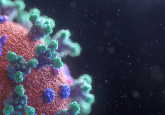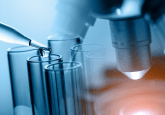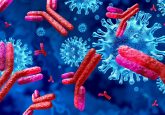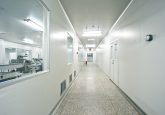Ask The Experts: the impact of COVID-19 on the lab

In this Ask the Experts feature, our experts explain how their laboratories have been affected by the COVID-19 pandemic, explore whether their institution will continue with the changes they’ve made during lockdown or revert back to the way thing were pre-pandemic and discuss what the future will look like for laboratories.
Meet the experts

Daniel Schulz-Jander
Senior Director, Bioanalysis (Mass spectrometry)
QPS Netherlands (Groningen, Netherlands)
Daniel received his Dipl Chem from the University of Kassel (Kassel, Germany) in chemistry, his Doctor rerum naturalium from the Technische Universität München (Munich, Germany) in environmental chemistry, followed by a post-doctoral fellowship in pesticide metabolism at UC Berkeley (CA, USA). Since then, Daniel’s scientific passion has been in bioanalysis. Starting in biotech at Ligand and Arena Pharmaceuticals (CA, USA), he then moved to Medtronic (CA, USA) where he built a bioanalytical team specializing in drug in tissue analyses. Since February 2022, Daniel is currently the Senior Director of bioanalysis mass spectrometry at QPS Netherlands, where his team supports small and large molecule bioanalysis with LC-MS/MS as well as ICP/MS.
 Nithya Paranthaman
Nithya Paranthaman
Senior Scientific Officer
The Royal Marsden Hospital (Sutton, UK)
Nithya Paranthaman is currently a Senior Scientific Officer at The Royal Marsden Hospital (RMH; Sutton, UK). Nithya’s research focuses on developing remote patient monitoring schemes in cancer pathways. Her PhD dissertation involves method development and optimization of microsampling tools to monitor disease status in multiple myeloma patients. Prior to joining the RMH, she worked at Sanofi Genzyme (MA, USA) and Novartis (NJ, USA). Her research interests lie at the intersection of medicine and science.
 Selvaa Kumar Chellasamy
Selvaa Kumar Chellasamy
Associate Professor, Bioinformatics
D. Y. Patil. University, (Navi Mumbai, India)
Dr Selvaa Kumar Chellasamy serves as Associate Professor for the Bioinformatics division within the School of Biotechnology and Bioinformatics at D. Y. Patil. University. He obtained a PhD from Bharathiar University (Coimbatore, India) in Bioinformatics. He joined the University in 2003 as a lecturer and has gained 18 years of research experience as well as having worked on diverse projects dealing with different aspects of bioinformatics from sequence and structural perspective. His in-silico based contribution to the inhibitory activity of Terminalia arjuna against dipeptidyl peptidase IV in experimental diabetes received the P.P Suryakumari prize from the Indian pharmacological society in 2019. He worked on several bioinformatics projects related to fanconi anemia in the South Asian population, tubulin dynamics and prolonged precocious puberty, apart from schmid metaphyseal chondrodysplasia in Chinese lineage. He works closely with biotechnologists from different parts of the world to understand biological problems and provides solutions from an in-silico perspective. His main area of interest includes molecular simulation, short peptide and nanoparticle designing apart from next-generation sequencing data analysis.
Questions
Daniel:
- The laboratory operation pre-pandemic and presently has not really changed.
- One difference I have observed is that team members are more likely to stay at home when they feel sick, to ensure that their colleagues are not being impacted by their illness, regardless of whether it is COVID-19 or not.
- Planning for materials and supplies is incredibly more important for long-term planning and detailed scheduling is becoming essential (for example, rare matrices from NHP and canine have delivery times in excess of 10 weeks).
- Equipment supply delays have led to delays in repairs and expansion plans.
Nithya: The pandemic has accelerated innovation propelling forward a patient centric healthcare system. As a clinical researcher within the NHS, I feel there is much more awareness to the struggles patients face on a daily basis. The pandemic highlighted the complications in the patient-pathway and there has really been a push to protect the most vulnerable. Incorporating Patient and Public Involvement (PPI) into the design and conduct of research is increasingly becoming more popular and in fact essential, post pandemic. I was a PhD student during the pandemic, and we had recently launched a clinical trial to assess a remote monitoring scheme for multiple myeloma patients. I was given the opportunity to work directly with our study participants. Having this one-to-one experience with patients allowed me to understand the criticality of PPI. Although patient centricity in translational clinical research was emerging pre-pandemic, there is much more emphasis now on patient needs and aligning research goals with the patient at the center.
Selvaa: The pandemic has brought dramatic changes in the functioning of both research and pathology labs. Prior to the pandemic, research labs were fully operational wherein the mentors and research scholars were able to communicate and push their research work for publication. However, during the pandemic, both the mentors and research scholars got scattered and there was a big gap in data communication among their team members, which had a strong impact on their research analysis. During the period of lockdown, labs with their generated samples were left to rot in most of the labs which were not of any use after the post pandemic. Thus, the whole experiment needed to be performed by the research scholar which took their time and money. This has further delayed their research work and their publication. Thus, the labs which had manual operations during the pre-pandemic period are opting for automation today, for faster data analysis and publications.
Regarding the pathology lab, prior to the pandemic, they were taking their sweet time for giving the report. During the pandemic period, labs were forced to put an extra workforce on report generation due to its importance during traveling. Furthermore, remote care or telehealth was not much in use prior to pre-pandemic, which has become an integral part of disease diagnosis of late. Globally, labs were not prepared for large-scale sample analysis due to the resource crunch. But of late, labs have developed their facilities for large data set analysis.
Daniel: Laboratory automation at our site is limited to very specific workflows/steps within the bioanalytical analysis workflow. Therefore, there is no negative impact on staffing numbers due to automation. The implementation of automation and technology however does change the environment for the workers. With respect to requirements, there is an increased need for staff to be able to program/set up workflows historically done on the bench and described in SOPs within software packages. Just like in many fields, the ability & willingness to program and teach software repetitive tasks has become a key part of the job.
Nithya: There have been staff shortages across the NHS. Within our team, there are very few scientists devoted solely to research. As a result, we are constantly looking for ways to increase our productivity, and automation seems to be the answer. We have already upgraded some of our analyzers which have barcoding capabilities and allow for very few hands on methods. Additionally, the updated software systems that we are using are much more user friendly. We would like to continue to implement semi-automatic or fully automatic processes into our workflows to improve our efficiencies and allow us to concentrate on our research and innovation.
Selvaa: Automation’s implementation is only possible when data accuracy and time-bound delivery become essential since many of these operations can be laborious, time consuming and can be prone to human error. However, even these issues can be sorted out with well-trained and qualified staff members. The hurdle in the implementation of automation is due to the availability of excess manpower at an affordable price. Thus, automation in industries and institutions can be only brought into existence when there is a staffing shortage. Also, whenever there is a requirement for data accuracy and large-scale data analysis followed by instant delivery, automation could be a better solution. As far as automation is concerned, it’s not meant for replacing the human workforce. Of late, cost cutting, maximizing revenue and increasing the testing volume have led to an artificial intelligence-based automation process. But its implementation is still a hard task wherein the existing staff may lose their jobs.
Daniel:
- The working-from-home concept drove a very wide adaptation of collaborative working solutions through Teams, GTM, Zoom, etc. Hence, collaboration across country lines and time zones was much more easily established, allowing teams to come to a consensus more quickly. Also, traditional companies have provided the option to work from home moving forward.
- Sharing online has become much easier, however, IT security systems and training have become an essential part important of research collaboration.
- Researchers have become more deliberate with time planning.
Selvaa: Research work has suffered a severe setback during the course of the pandemic as it has become quite difficult to convert their home into a research lab. It was like practising swimming in the swimming pool without a drop of water. In particular, wet lab work got severely affected due to the heavy requirement of the lab facilities, reagents and the rest of the team members. Many of the samples yet to be analyzed were lying idle in the lab for months, and researchers were struggling to meet their ends. As a result, online sessions were held on a regular basis which paved the way for keeping the team intact. Still, most of the work could not move an inch when it comes to wet lab-based research work. The bottlenecks were with data collection and their analysis with their colleagues to disseminate their research findings. As a result, few of them shifted to in-silico-based studies for the time being while sitting at home, as it needs a system with ample data freely available online. As a result, 2020 saw a huge surge in research papers from an in-silico perspective which has, of course, helped in drug repurposing and lead identification. At the same time, research from home was not an easy task, even for certain in-silico-based studies like simulation which required dedicated software and hardware. Working from home with flexible working hours could have been a boon for the rest of the professionals within different job categories but not for biologists, as their labs were an integral part of their research work.
Nithya: Although the periods of lockdown during the pandemic kept us all apart physically, I think it actually brought us all together digitally. We were able to connect with colleagues and collaborators across the world. Having simple conversations through video calls has the potential to evolve into new research proposals. I felt that our research community came together during some of the darkest times and was able to expand capabilities and indulge in meaningful research. There was an adjustment period at first as we navigated through the new normal, but I found myself on many more video calls with global colleagues. I was able to build a digital network, and I continue to keep in contact with those I met during the pandemic. I find this way of networking and building connections highly successful as I may not have had the opportunity to connect with these researchers pre-pandemic. Having people on a team with varied expertise and insight has been very helpful for clinical research. The pandemic has taught us the importance of banding together as a community to accelerate research and we have learned that digital methods to stay connected are successful.
Daniel: A risk management/disaster recovery and business continuity plan already included a potential pandemic as part of the risk assessment process, hence there is no real change in how QPS approached the disaster pre and post outbreak.
Nithya: Two of the greatest lessons I have learned because of the pandemic are the importance of communication and agility. As I had mentioned before, I was in the middle of my PhD program about to launch a clinical trial. There were many different stakeholders involved, and as I was a key player, I felt the pressure to find a way to efficiently maintain the momentum of our research in the midst of a crisis. There was some trial-and-error on my end to figure out the best way forward, but I quickly learned that communication was key. Frequent meetings with all stakeholders were scheduled to discuss updates and plans of action. At times, I did feel as if I was over-communicating, but this allowed us to mitigate any risks and deal with any issues at hand as our research protocol was constantly evolving due to the pandemic. Agility was also important as there were many decisions that had to be made with speed and composure. I was working directly with patients and patient safety was top priority. The decisions that needed to be made in clinics could not compromise patient health. I have learned from this experience and will continue to prioritize communication and agility when confronted with extreme events.
Selvaa: Our department has both biotechnology and bioinformatics-based research labs. During the pandemic, the students left for their hometowns and as a result, they were not able to access the lab facilities. For a few days, we were planning to bring the students back to the lab, but the extension of the lockdown date forced us to change the plan. Thus, regular offline lectures were shifted to the online mode, which was also recorded for their later use. Regarding the practical, we could not decide upon a solution as the first-year students were quite new to the lab decorum and they needed those basic training. Initially, we provide them with online wet lab-based techniques which needed a mouse and keyboard for lab-based work. But that was too technical. Thus shifted our plan wherein we showed them a live video wherein staff was performing the experiments. In this way, students were able to at least understand the way experiments are to be carried out.
Daniel:
- Broadly available remote access at more levels within the organization.
- The ability to review/audit data processes in a remote manner will remain available options to clients and customers.
- Portals for review.
- Noise-reduction benches (ion-benches) for remote auditing.
Nithya: The sheer complexity of addressing problems in healthcare and the potential this has for improving human lives continually inspires me to develop and hone my skills. I aspire to stay in clinical research and continue to shape a more patient-friendly health system with the patient at the center of everything I do. Prior to the pandemic, I was always involved in bioanalytical research but was disconnected from those that will ultimately be affected by the research – the patients. Working with patients during the pandemic has been a humbling and eye-opening experience. Understanding their story has helped me shape my study. More often than not, the research world fails to adequately understand the needs and wants of end-users. I would like to continue to spread awareness about the importance of patient involvement in clinical research and educate early career researchers. This is something I feel very passionate about and value as I believe it is imperative to amplify the patient’s voice in research.
Selvaa: The pandemic was a good mentor for the last two years, which has brought many changes in people’s lives. I have made certain changes as a result of the pandemic which will stay. To begin with, during the pandemic all the bioinformatics-based lab sessions were conducted online using google meet. Some of the software was online and a few of them were standalone versions. Thus, the students were asked to download the software on their end and perform the practicals as per the given instructions. All the students were asked to share their screens while facing any difficulties. Post pandemic, certain practical sessions are still based on online software and are performed through google meet as they don’t require higher RAM facilities for their execution. These changes made during the pandemic will stay as the students are able to repeat the same practicals for better understanding and this saves the practical time for the other major practicals.
Daniel:
- To ensure the safety of all employees, working from home was broadly adopted throughout the organization. Nonetheless, team members working in the lab were still asked to come in – though in smaller numbers – and work on-site, while management largely worked from home. The broad adaptation of WFH posed a challenge from a leadership and team engagement point of view, so going forward we will gradually reduce the established working from home days for management. All PI/SD are asked to be on-site for all days worked unless unexpected circumstances need to be addressed.
- Shipping and receiving general access separation.
Nithya: As a clinical researcher based in a hospital setting, it is particularly important that I liaise with clinicians and other healthcare professionals. However, during the pandemic, hospital staff were required to re-prioritize their work to accommodate the additional workload. This meant that clinical care teams were fully devoted to patients and had to deal with the challenges that were brought about due to COVID-19. There was a significant shift in focus away from research which was quite challenging for me as I rely on clinical insight and perspectives. There was a decrease in engagement between the clinical and the research world, slowing down the pace of translating research into the clinics. Thankfully, this was temporary and engagement between the two communities has started to pick back up.
Selvaa: The pandemic was a small pause and not a full stop. So, all the changes that I made will not stay long term. Thus, with the advent of time, slowly things have started coming back to normal again. During the pandemic, all the students were instructed to submit a soft copy of the practical journal. However, after the post pandemic, students were asked to submit the hard copy of the journal instead of the soft copy. Most of the viva-voce communication, which was held online during the pandemic, has been again shifted to offline mode for better one-to-one interaction. There was also a plan to continue the online mode of teaching. But what we observed over here was boredom and lethargy observed among the students, as they were not able to see the teacher during the lecture session which is very important for any classroom session. Most importantly, when the number of the class exceeds more than thirty students then it becomes quite difficult to teach online mode, as it becomes more of a monologue rather than a dialogue. As a result, all the lecture sessions were converted to offline mode. Thus, even though online mode provides a whiteboard, with an option to view each and every student when it comes to teaching, there should always be eye contact between the students and the teacher for better communication and concentration for knowledge transfer. Regarding the implementation of automation by researchers during the pandemic, this still exists post pandemic as it has reduced the burden on the staff. As of now, automation generates voluminous data and analysis requires human intervention.
Daniel: The vision of our global organization is to serve customers around the globe in a reliable and efficient fashion. The core of our workflow will most likely remain unchanged. But, with the increased availability of technology solutions, I foresee the laboratory to be a mostly paper-free setup combined with increased automation solutions for repetitive tasks.
Nithya: If I could describe in three words what I believe the future laboratory will look like in 10 years, I would say: digital, automated and green. The COVID-19 pandemic shocked the world and exposed many vulnerabilities in the research community. It has reshaped our way of thinking and behaving. We are a digital world now and I believe our laboratories will slowly be digitalized over time. This would also accommodate the increase in automation we are currently seeing in our labs. Additionally, I wish to see more sustainable practices in the laboratory. There has been a push for greener systems and I am hopeful that clinical laboratories across the world will commit to reducing their carbon footprint.
Selvaa: There is an increase in demand for life science-based research, due to advancements in medical technologies and huge funding by the private sector. After the advent of the human genome project and the next genome sequencing, the volume of sequences has started piling up. Apart from the genomic dataset, there is also a surge in proteomic data which is less touched upon. With the availability of higher-end workstations and data storage devices, data analysis has become feasible. Thus, future labs will be dealing with larger datasets (genomic and proteomic) at ease from anywhere, due to the cloud computing facilities. The pandemic allowed large-scale global lab data access, for any remote access after valid authentication. All the data, whether financial, medical, genomic or proteomic needs highly secured facilities like Amazon, IBM and Microsoft cloud computing facilities. Interestingly, cloud-based operations during the pandemic provided people with flexible computing power, which takes the tension off the company related to data storage, data access and security.
Now, the new normal is working from home which has provided a better opportunity for the company to reduce its operational cost and spend more on cloud facilities. The next valid question is why we need highly secured facilities. The answer is in the current scenario, information is wealth which comes from the larger data analysis. This extracted information from the pile of data should be available only to the authorized person until it gets validated. Now, most of the bioinformatics-based research work is restricted to online dataset analysis, as it becomes quite difficult to transfer the voluminous files to local computers. The data and the information retrieved remain in the cloud facilities. Till the time of publication, this information should be in a secured mode so that there is no accessibility for outsiders. Thus, the working principle of the lab will change completely, wherein the progress of the lab can be accessed from home itself during the weekends. The pandemic increased the utilization of labs. Therefore, in the future, lab space will increase to accommodate all the facilities such as running the next-generation sequencing data, molecular simulation, pattern recognition in the genome and comparative genome analysis under a single roof. Most importantly, labs will become more adaptable to changes at a short notice for any adverse conditions in the future.
In association with:







